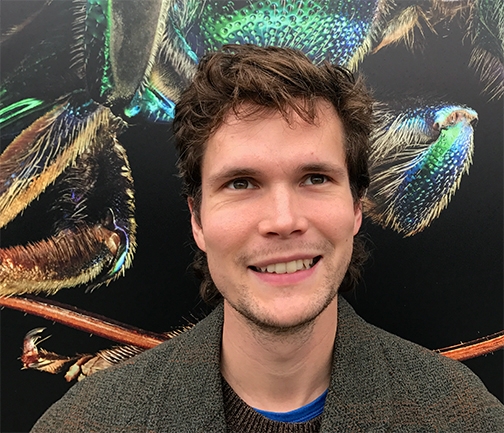
When the UC Davis emeritus professor of entomology, a global authority on bumble bees, died June 7, 2019 at age 85, scientists found a way to memorialize him and what he loved.
The Bohart Museum of Entomology--where Thorp spend much of his time identifying bees, helping scientists, and encouraging guests at open houses to learn about the wonderful world of bees--decided to memorialize him with an annual Robbin Thorp Memorial First-Bumble-Bee-of-the-Year Contest. The first person to photograph a bumble bee in 2021 in the two-county area of Yolo and Solano would win.
And it is only fitting that Charlie Casey Nicholson, who studied bees with Thorp, won. He photographed a black-tailed bumble bee, Bombus melanopygus, in a manzanita patch at 3:10 p.m., Thursday, Jan. 14 in the UC Davis Arboretum and Public Garden to claim the honor. The site is near Old Davis Road.
Due to inclement weather, bumble bees are not easy to find this time of year. Neither are they easy to photograph.
In fact, Nicholson noted this was his seventh observation field trip to look for the first bumble bee of the year. He had searched six previous times (three 10-minute observations on the manzanita on each of two other days, Jan. 6 and 7).
As the winner, Nicholson will receive a special Bohart bumble bee coffee cup and a face mask, said contest coordinator Lynn Kimsey, director of the Bohart Museum and a UC Davis professor of entomology.
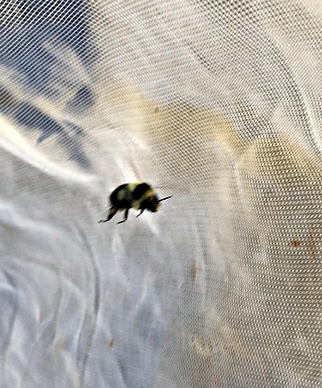
"It is truly an honor to win the contest," said Nicholson. "I was a student of Robbin's during the 17th annual Bee Course in Portal, Ariz. I will never forget him wielding his canopy net."
"The first night (8/17/2015) he gave the opening seminar--a whirlwind tour of what makes a bee. It was so exciting to be at this research station surrounded by people whose names you've read all the time.”
“Robbin helped me learn to pay close attention to the arolia of Anthidiini. As we moved into identifying bees, Robbin was a great teacher as we worked through the dichotomous keys in The Bee Genera of North and Central America: Hymenoptera Apoidea. He always had some morphological signpost that wouldn't give away the 'answer' but would certainly guide you in the right direction."
Charlie holds a bachelor of arts degree in biology (evolution, ecology and behavior), 2010, cum laude, from Skidmore College, Saratoga Springs, New York. He received his doctorate in natural resources in 2018 from the University of Vermont, where he was a Gund Institute for Environment graduate fellow. In his dissertation, he examined how landscape and farm management affect the multiple benefits provided by wild bees.
Nicholson joined UC Davis as a postdoctoral scholar in the spring of 2019, and receives funding support from the USDA Invasive Species and Pollinator Health Unit. He recently co-authored a paper, “Natural Hazard Threats to Pollinators and Pollination,” published in the journal Global Change Biology, that analyzed 117 published research papers on natural hazards that threaten pollinators and pollination.
His other interests include multiple dimensions of biodiversity, conservation planning, agricultural management, ecosystem services, and community and landscape ecology.
Robbin Thorp
Thorp, a member of the UC Davis entomology faculty for 30 years, from 1964-1994, died June 7, 2019 at his Davis home at age 85. A tireless advocate of pollinator species protection and conservation, Thorp was known for his expertise, dedication and passion in protecting native pollinators, especially bumble bees, and for his teaching, research and public service. He was an authority on pollination ecology, ecology and systematics of honey bees, bumble bees, vernal pool bees, conservation of bees, native bees and crop pollination, and bees of urban gardens and agricultural landscapes.
He achieved emeritus status in 1994 but continued to engage in research, teaching and public service until a few weeks before his death. In 2014, he co-authored two books Bumble Bees of North America: An Identification Guide (Princeton University, 2014) and California Bees and Blooms: A Guide for Gardeners and Naturalists (Heyday, 2014).
Every summer from 2002 to 2018, Thorp volunteered his time and expertise to be one of the instructors in The Bee Course. In a 2013 interview with the UC Davis Department of Entomology and Nematology, Thorp said he loved teaching at The Bee Course and praised the co-instructors and students. "Ron McGinley who got his undergraduate degree at UC Davis does most of the initial student contact and scheduling for the course. Steve Buchmann, who got his PhD at UC Davis in 1978, is one of the instructors. There are usually about eight instructors and 22 participants for the course. Most of the time is spent in the lab identifying bees to genus. At least three days are spent in the field so students can see various bees doing their thing, collect them and bring them back to the lab to identify them. It is a great experience for students to interact with instructors and especially with their peers from around the world. Instructors all donate their time to teach in the course, but benefit from the chance to get together with colleagues and a new cohort of interesting students each year. Every class is different (that is, it takes on its own personality) and each student brings something new and different to the mix."
Robbin Thorp would have been proud of what happened on Thursday, Jan. 14.
Attached Images:
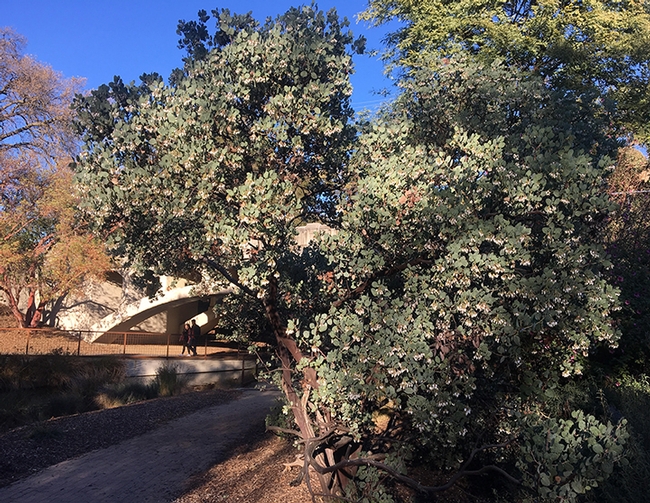
This manzanita plant at the UC Davis Arboretum and Public Garden, near Old Davis Road, is where UC Davis postdoctoral researcher Charlie Nicholson captured an image of the first bumble bee of the year. (Photo by Charlie Nicholson)
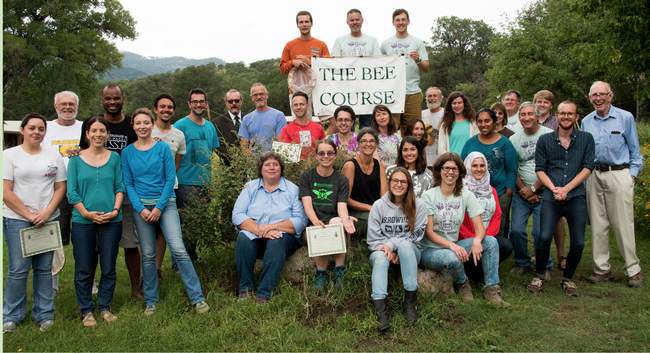
In this 2015 Bee Course class photo, Charlie Nicholson (top, far left) holds the sign. In the second row, far left, is co-instructor Robbin Thorp, UC Davis distinguished emeritus professor of entomology. Nicholson is the winner of the inaugural Robbin Thorp Memorial First-Bumble-Bee-of-the-Year Contest, sponsored by the Bohart Museum of Entomology. (Photo courtesy of The Bee Course)
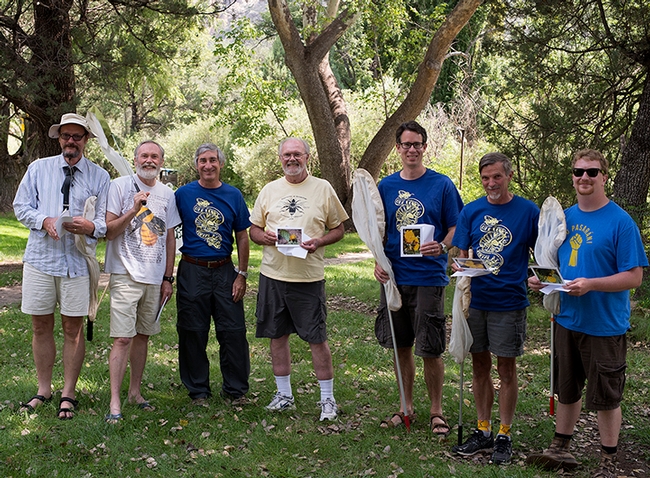
The Bee Course instructors in 2013 included (from left) Laurence Packer, York University, Toronto; Terry Griswold, USDA Bee Lab, Logan, Utah; Steve Buchmann, Tucson, Ariz.; Robbin Thorp, UC Davis, John Ascher, University of Singapore; Jim Cane, USDA Bee Lab, Logan, Utah; and Eli Wyman, American Museum of Natural History, N.Y. Not pictured course leader Jerome Rozen, American Museum of Natural History. (Photo courtesy of The Bee Course)